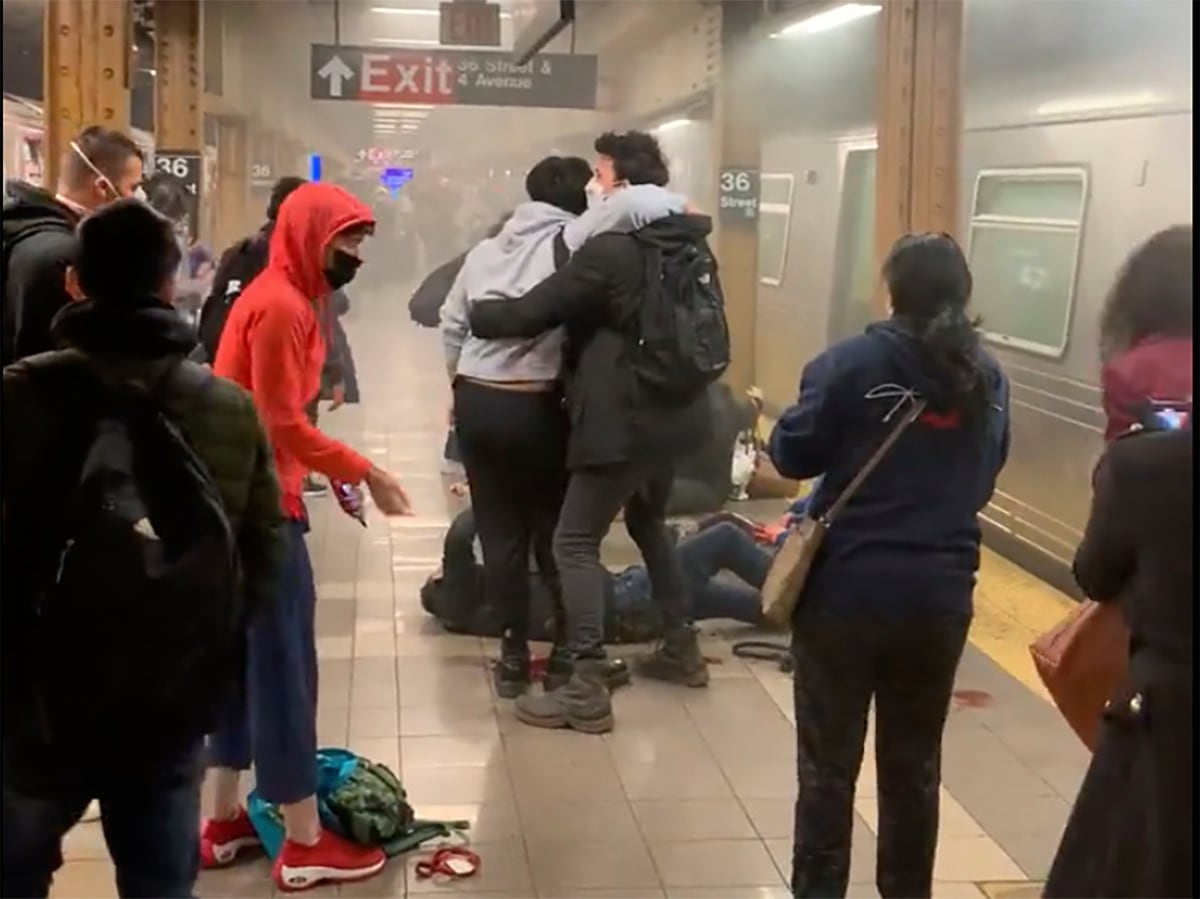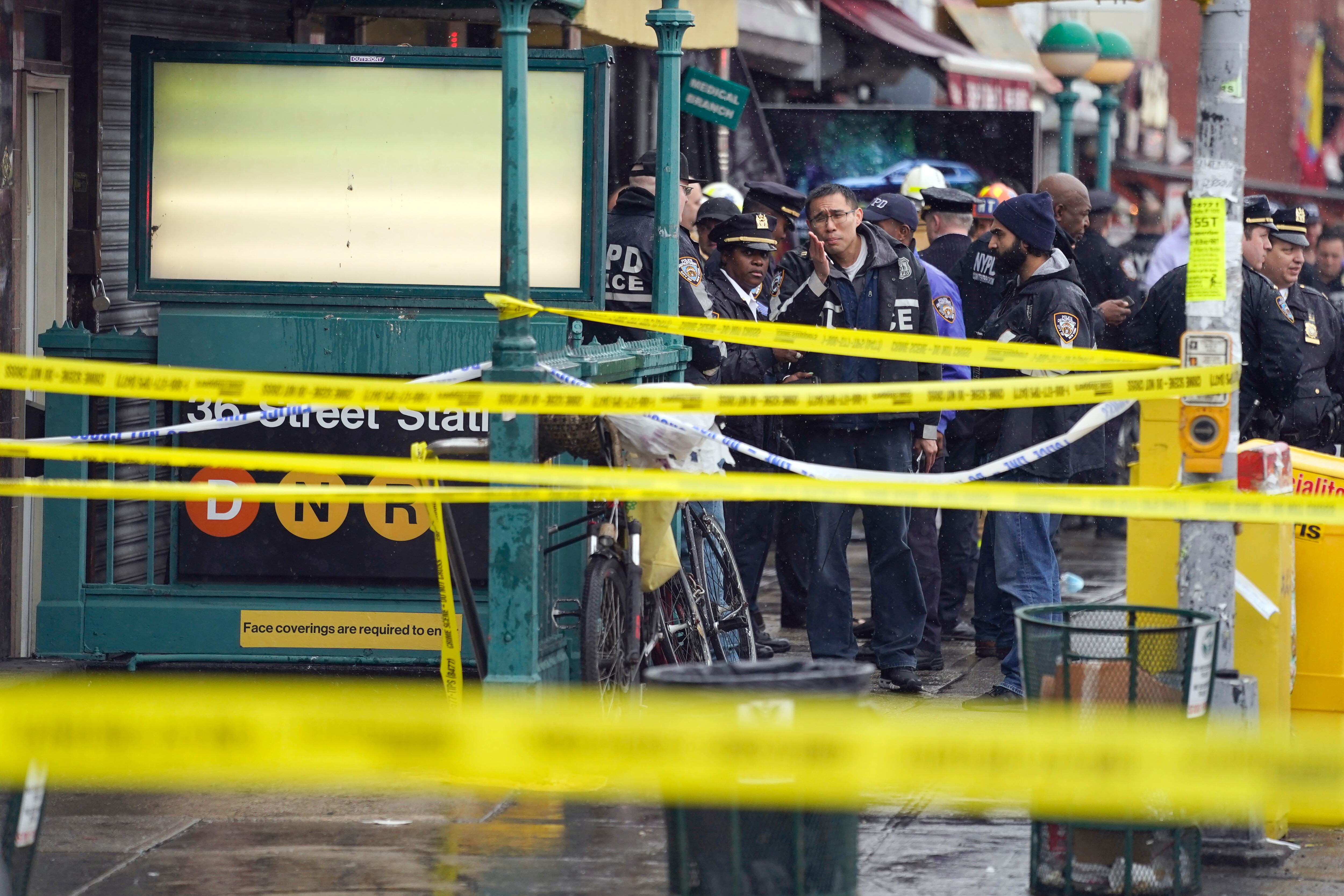Editor’s note: This story was first published in the New York Post. Get the latest updates in the Brooklyn subway shooting with The Post’s live coverage.
Moments after a crazed gunman opened fire on a crowded Brooklyn subway, a veteran who’d previously done a tour in Afghanistan sprang into action to help one of the victims, using the skills he learned in the military to save the man’s life.
Thomas Fischer, 33, was heading to class at the SAE Institute of Technology Tuesday morning when he arrived at the 36th Street station planning to transfer from the R train to the D. Instead, he saw pandemonium unfolding before his eyes.
“I only saw the smoke,” he said of the mayhem that came after a suspect opened fire on the Manhattan-bound N train, shooting 10 and injuring 19 others.
“I saw smoke and thought the train was broken. I walked up the platform, saw the engineer telling everyone to get on the R train,” Fischer recalled. “I introduced myself, asked if they needed help.”
Fischer, who was featured on The Post’s front page Wednesday applying a tourniquet to a wounded man’s leg, said he used his military training from the US Army to assist the victim, who was shot in the lower right ankle.
“The person I was working on, the tourniquet that they tried was not working. I had a belt, so I used my belt to stop the bleeding, or slow it down enough, and just keep him nice and calm and awake so he doesn’t pass out,” said Fischer, who spent nine years with the military and last served with the Army’s esteemed 10th Mountain Division.
“The military is very big on ‘Stop the bleeding, high and tight tourniquet.’ That’s ingrained in your brain from day one,” he continued.
“I didn’t want to elevate his lower right foot because I was concerned it was broken. I really wanted to stop that bleeding so that it would be ready when the EMTs arrived.”
Fischer asked the victim banal questions about his background, such as how long he’d lived in the city and whether he was going to college, to “take his mind off” what had happened.
“He was in shock at that moment. When the shock wears off, that’s when the pain hits. I was trying to keep his mind on something else,” Fischer explained.
“It was the weirdest conversation I ever had with a stranger. Just like, stopping the bleeding, you know, then it was like, ‘Okay, have a good day!’”

Fischer described another commuter who was triaging other victims and giving orders to the helpers.
“He went around to all the different patients, for lack of a better word, to assess, so I was like, he must be in charge,” he explained.
It’s not immediately clear who that man is. Fischer didn’t get anyone’s name. He just applied the tourniquet, waited for cops to arrive and headed to class.
“It was just like a whirlwind. Once the police got there, they were like, ‘Okay, thank you guys very much but we got to get control of the situation,’” Fischer said.
“I walked a couple blocks and I went into school, finished out the day and came home. I was like, ‘Hell, that’s a crazy way to start the morning.’
“The one photo on the front page has been circulating since yesterday,” he added. “It was pretty funny, they were like, ‘Holy crap, is that why you were late [to class]?’”
Fischer said he’s been asked by many others how he knew what to do and added his advice would be to always ask if help is needed before jumping into action.
“In situations like that, oftentimes there’s too many people around and nothing getting done,” he explained. “I wouldn’t have felt comfortable if I hadn’t been in the military as long as I was, because you’re dealing with people’s lives.”




